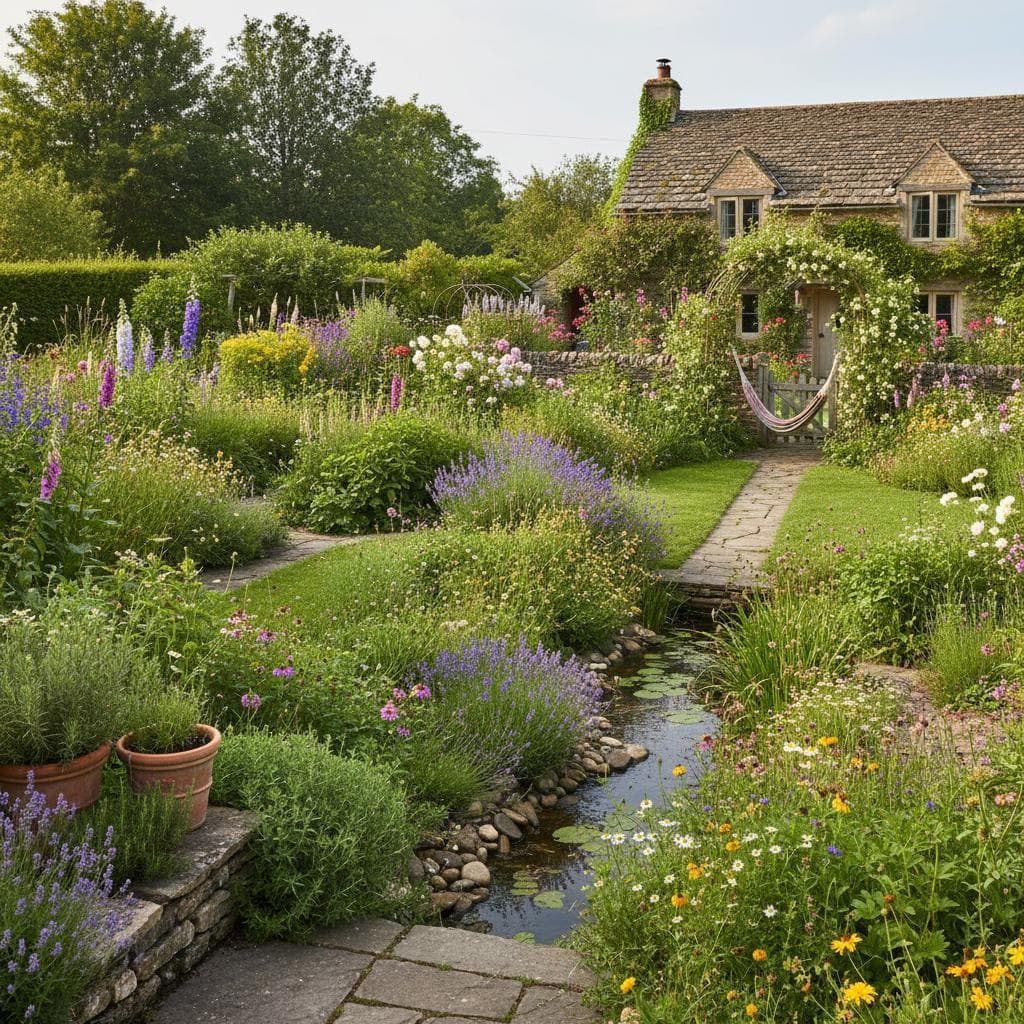The Revival of Vintage Florals in Grandmillennial Gardens
Sunlight filters through lace curtains in a countryside cottage, illuminating a table adorned with pink peonies and an assortment of china patterns. This evocative scene captures the essence of grandmillennial gardens, evoking memories akin to entries in a grandmother's journal. Homeowners across urban balconies, suburban plots, and rural patios now embrace these designs, transforming once-sparse spaces into vibrant expressions of heritage and individuality.
The appeal stems from a deliberate choice to infuse gardens with personality. Gardeners select plants that carry historical significance, such as Victorian-era roses or Edwardian sweet peas, to create environments that resonate on an emotional level. This approach elevates gardening beyond mere aesthetics, positioning it as a practice rooted in storytelling and sensory delight.
Origins in Nostalgic Rebellion
Defining Features of Grandmillennial Designs
Grandmillennial gardens appear effortlessly abundant, yet they result from intentional composition. Designers forgo rigid symmetry in favor of organic arrangements that harmonize diverse heights and forms. For instance, vigorous climbers like 'New Dawn' roses pair with structured borders of English lavender, while self-seeding cosmos cascade along gravel walkways.
The overall effect fosters a sense of habitation and affection. Key components shape this distinctive aesthetic:
- Subdued hues including soft pinks, ivory whites, muted indigos, and pale golds that evoke faded fabrics.
- Varied foliage structures combining upright accents such as digitalis with trailing options like thymes or vinca.
- Antique furnishings such as ornate benches or terracotta pots evoking bygone estates.
- Season-spanning beds with early bloomers like tulips transitioning to summer salvias and fall asters for year-round appeal.
- Scent integration positioning aromatics including lathyrus odoratus and gardenia near pathways or patios.
Gardeners act as curators, selecting perennials passed down through generations or upcycling found objects into functional decor. This method produces landscapes that inspire narrative, much like scenes from period films where every detail contributes to atmospheric depth.
Sustainability Through Heritage Practices
Beyond visual allure, grandmillennial gardens promote environmental stewardship. Heirloom varieties safeguard biodiversity by maintaining genetic pools resistant to modern threats. Gardeners revive time-honored methods, such as vermicomposting and dry seed storage, which reduce expenses while minimizing ecological impact.
Community exchanges thrive through local meetups and digital forums, facilitating the trade of divisions and propagation tips. These interactions revive communal traditions, where sharing propagated stock strengthens social bonds. Participants find reassurance in this collaborative spirit, underscoring gardening's role as a shared endeavor.
In the face of evolving climates, the robustness of legacy plants proves advantageous. Developed in eras without synthetic aids, these cultivars often exhibit superior tolerance to stressors like drought or pests. Their adoption signifies forward-thinking conservation, merging sentiment with practical resilience.
Daily Joys of Abundant Gardens
Grandmillennial gardens enrich routine experiences for their stewards. Dawn arrives with the perfume of blooming 'Gertrude Jekyll' roses wafting indoors. Midday tasks, from trimming spent foxglove spikes to harvesting stems for arrangements, yield tangible fulfillment.
Even maintenance routines, like irrigating borders, adopt a contemplative quality, linking present actions to ancestral customs. This floral resurgence thus serves as both stylistic evolution and restorative practice, honoring diligence and lineage amid contemporary haste.
Steps to Develop Your Grandmillennial Garden
To initiate a grandmillennial space, begin with modest plantings informed by personal recollections. Select varieties tied to formative memories, such as the lilacs from a childhood yard or jasmine evoking seasonal celebrations.
- Assess your site: Evaluate sunlight, soil type, and available space to choose suitable heirlooms, like shade-tolerant hostas or sun-loving echinaceas.
- Source materials: Obtain starts from family, seed banks, or nurseries specializing in heritage stock; prioritize natives for low upkeep.
- Layer thoughtfully: Plant in tiers, with bulbs at the base, perennials mid-level, and climbers on supports for dynamic growth.
- Incorporate accents: Integrate salvaged items, such as enamel buckets for planters or wire baskets for hanging displays.
- Maintain seasonally: Mulch in spring, deadhead through summer, and divide in fall to sustain vigor and spread.
Through these efforts, your garden evolves into a personal chronicle. It connects you to a network appreciating depth over flawlessness, whether scaling a railing with clematis or flanking a doorway with phlox. Ultimately, this style nurtures spaces that endure, blending beauty with profound significance.





